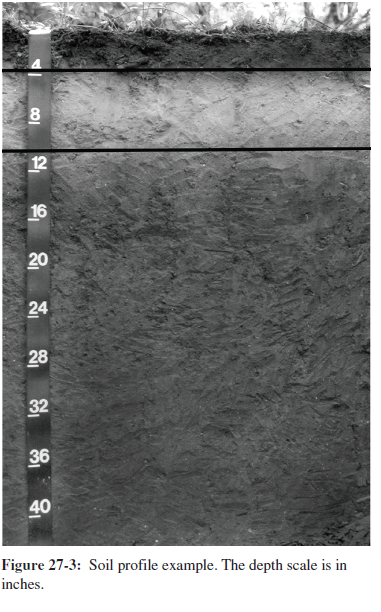What is infiltration?
A) The transition from liquid to gas as a result of increases in temperature
B) Plants taking in water
C) Water soaking into the ground
D) Water running off the surface and entering a channel
Answer: C
You might also like to view...
How do fission power plants work?
A. The heat from a nuclear reaction is used to boil water. B. The krypton gas generated in the fission process is used to drive a turbine. C. The neutrons from a nuclear reaction undergo fusion with water to produce hydrogen gas, which drives a turbine. D. The electrons from a nuclear reaction are harnessed to produce an electrical current. E. none of the above
Is this soil more likely to have developed in a fairly flat area or on a steep slope? How do you know?
The following questions are based on Figure 27-3, the photograph of a soil profile. You may view this image in color by going to the Lab Manual website at www.MasteringGeography .com, or by scanning the QR code for this exercise. The depth scale is in inches.
What will be an ideal response?
Most of the efforts of the United Nations to promote food security, including the World Food Program, function at the
A) global level. B) national level. C) family level. D) personal level.
Which of the following is the main hazard for areas along the river terrace?
A. debris flows that carry large blocks from the volcano B. slow movement of material downslope C. rock falls D. shrinking and swelling of clays